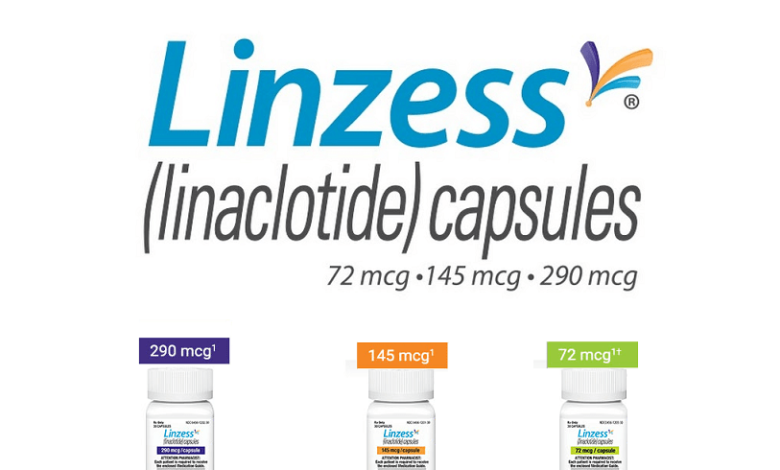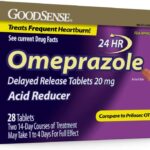Can You Take Linzess at Night?

What is Linzess?
Linzess is a brand of linaclotide that works by increasing the secretion of chloride and water in the intestines, which can soften stools and stimulate bowel movements. Linzess is a prescription medicine used to treat chronic constipation, or chronic irritable bowel syndrome (IBS) in people who have had constipation as the main symptom. The safety and effectiveness of Linzess has not been established in patients under 18 years of age.
Linzess was approved in the US and Europe in 2012, it is marketed by Allergan in most of the world and by Astellas in Asia; Ironwood Pharmaceuticals was the originator. In 2017, it was the 257th most commonly prescribed medication in the United States, with more than one million prescriptions.
How should I take Linzess?
Take Linzess exactly as prescribed by your doctor. Follow all directions on your prescription label and read all medication guides or instruction sheets.
Take Linzess in the morning on an empty stomach, at least 30 minutes before your first meal.
Swallow the capsule whole and do not crush, chew, break, or open it.
If you cannot swallow a capsule whole, open it and sprinkle the medicine into a spoonful of applesauce or bottled water. Swallow the mixture right away without chewing. Do not save it for later use.
Even if you have taken this medicine with applesauce, wait at least 30 minutes before eating a full meal.
If needed, medicine from the Linzess capsule may be given through a nasogastric (NG) or gastronomy tube. Carefully follow instructions for mixing medicine from the capsule with applesauce or water, or giving the medicine through a feeding tube. Ask your doctor or pharmacist if you have any questions.
It may take up to 2 weeks before your symptoms improve. Keep using the medication as directed and tell your doctor if your symptoms do not improve.
Store at room temperature away from moisture and heat. Keep the tablets in their original container, along with the packet or canister of moisture-absorbing preservative.
Keep this medicine out of the reach of children. Linaclotide can be fatal to a child who accidentally swallows this medicine. Seek emergency medical attention if this happens.
What is the best time of day to take Linzess?
The best time of the day to take Linzess is in the morning, at least 30 minutes before your first meal of the day. Take Linzess on an empty stomach and remember to take Linzess daily as prescribed by your doctor, to proactively manage your symptoms.
Can you take Linzess at night?
Yes, Linzess can be taken at any time of day, but it is typically recommended to take it in the morning, at least 30 minutes before your first meal of the day. This is because Linzess works by increasing the movement of the intestines and promoting bowel movements, which can cause abdominal discomfort or cramping. Taking Linzess in the morning can allow for bowel movements during the day, which may be more convenient for some people.
Taking Linzess at night may increase the risk of side effects such as diarrhea, as the medication can take several hours to work and may cause bowel movements during the night. Additionally, taking Linzess with food or on a full stomach may reduce the medication’s effectiveness, which is why it is recommended to take it on an empty stomach.
However, if you experience significant abdominal discomfort or cramping after taking Linzess in the morning, your doctor may recommend taking it at night instead. It is important to follow your doctor’s instructions and the instructions on the medication label when taking Linzess, including the recommended timing of the dose.
If you have any concerns or questions about taking Linzess at a specific time, it is best to consult with your doctor or pharmacist. They can provide guidance and recommendations based on your individual needs and medical history.
Taking linaclotide with food may increase gastrointestinal side effects such as diarrhea, abdominal pain, and gas. The absorption of any other oral medication you may take can be affected if you develop frequent or severe diarrhea. You Can Find More information on: How Long Does It Take For Linzess To Work?
What side effects can Linzess cause?
Linzess may cause side effects. Tell your doctor if any of these symptoms are severe or do not go away:
• diarrhea
• stomach pain
• swelling or feeling of fullness or pressure in the stomach area
• gas
• headache
Some side effects can be serious. If you experience any of these symptoms, stop taking linaclotide and call your doctor immediately or get emergency medical treatment:
• unusual or severe stomach pain
• bright red or black, tarry stools
• hives
Linzess may cause other side effects. Call your doctor if you have any unusual problems while taking this medication. If you experience a serious side effect, you or your doctor may send a report to the Food and Drug Administration’s (FDA) MedWatch Adverse Event Reporting program online (http://www.fda.gov/Safety/MedWatch) or by phone (1-800-332-1088).
Linzess Safety Information
Linzess can cause life-threatening dehydration in young laboratory mice. Children younger than 6 years of age should never take Linzess. Children 6 to 17 years of age should not also take Linzess .
Your doctor or pharmacist will give you the manufacturer’s patient information sheet (Medication Guide) when you begin treatment with linaclotide and each time you refill your prescription. Read the information carefully and ask your doctor or pharmacist if you have any questions. You can also visit the Food and Drug Administration (FDA) website (http://www.fda.gov/Drugs/DrugSafety/ucm085729.htm) or the manufacturer’s website to obtain the Medication Guide.
Talk to your doctor about the risks of taking Linzess.





